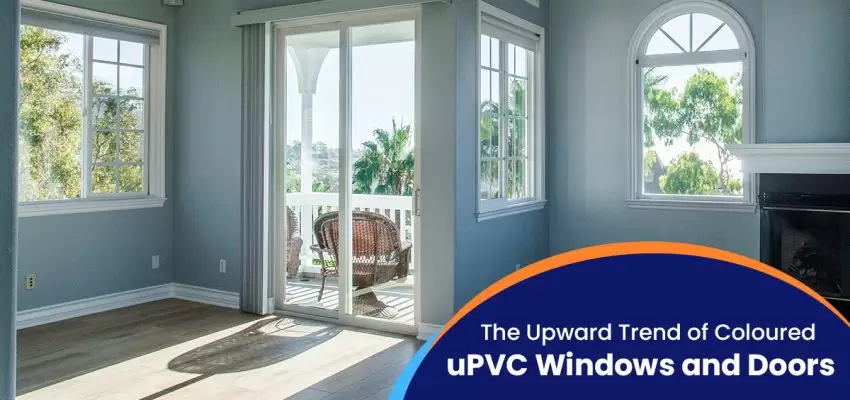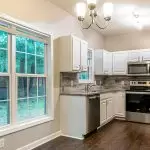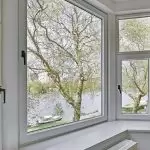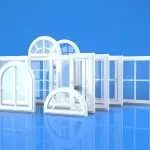In recent years, the demand for colored uPVC windows and doors has experienced a significant upward trend in the construction and home improvement industry. Traditionally associated with the classic white finish, uPVC windows and doors are now available in a spectrum of colours, offering homeowners and builders a versatile and aesthetically pleasing alternative.
Post your Requirement
The shift towards coloured uPVC options can be attributed to the growing emphasis on personalization and design flexibility. Homeowners are increasingly seeking ways to express their style and enhance the curb appeal of their properties. Colored uPVC windows and doors provide a unique opportunity to add a touch of personality to the exterior of homes, creating a more vibrant and visually appealing look.
Additionally, the availability of colored uPVC aligns with contemporary design trends that emphasize creativity and uniqueness. Builders and architects are integrating these colourful options into their designs to make a bold statement and break away from conventional norms. The versatility of colored uPVC allows for seamless integration with various architectural styles, from modern and sleek to traditional and charming.
Moreover, colored uPVC windows and doors retain all the benefits associated with standard uPVC, such as energy efficiency, low maintenance, and durability. Homeowners can enjoy the aesthetic benefits of vibrant hues without compromising on the practical advantages that uPVC offers.
As the construction industry continues to embrace innovation and consumer preferences evolve, the popularity of colored uPVC windows and doors is expected to persist, contributing to a more diverse and visually captivating urban landscape. This upward trend underscores the dynamic nature of the market, where customization and style play pivotal roles in shaping the choices available to homeowners and builders alike.
Types Of uPVC Windows
Here we have stated the types of uPVC windows:
- uPVC Casement Windows: uPVC casement windows, also known as crank windows, are renowned for their popularity and versatility. They swing in and out on side hinges, complementing both classic and modern architectural styles. Equipped with locks for security, these windows provide an elegant solution, although caution is advised regarding their compatibility with window air conditioners and exposure to rain.
- uPVC Sliding Windows: uPVC sliding windows emerge as excellent space-savers for modern apartments. Capable of sliding horizontally or vertically with varying height options, these windows ensure smooth operation. The parallel motion of window frames facilitates seamless sliding, and customization options include movable panes or a combination of fixed and sliding panels.
- uPVC Tilt And Turn Windows: uPVC tilt-and-turn windows prioritize ease of maintenance. They offer the flexibility to tilt in or open out, providing improved airflow, and making them suitable for open spaces or scenarios requiring controlled ventilation in tight areas.
- uPVC Bay And Bow Windows: uPVC bay windows, known for their charming features in classic home design, serve both practical and aesthetic purposes. Often accompanied by a cosy window seat, these uPVC windows typically consist of three sections with a fixed centre panel and casement windows on each side, adding visual appeal and creating extra space.
- uPVC French Windows: uPVC French windows, tall and sometimes extending from floor to ceiling, incorporate side hinges similar to casement windows. Multi-panel designs may fold accordion-style, maximizing airflow and creating a breezy atmosphere. Serving as doors to patios or gardens, they seamlessly combine safety with charm.
- uPVC Sash Windows: Featuring a classic vertical sliding design dating back to the 1670s, uPVC sash windows offer a touch of Victorian décor. Named for the cord or sash used for opening, these windows are not only easy to clean but also provide excellent ventilation.
- uPVC Louvred Windows: uPVC louvred windows introduce temperature control and a plantation-style look. Equipped with adjustable louvres, they balance visibility and ventilation. When open, air flows through while maintaining visibility, and closed louvres effectively control airflow and ensure privacy.
- uPVC Awning Windows: Named for their resemblance to windows with overhead awnings when open, uPVC awning windows are ideal for rainy areas. Opening from the top and sealing tightly when closed, they are generally short but wide, commonly used in rooms with high ceilings to provide efficient ventilation.
Why uPVC Windows?
The benefits of installing uPVC windows are multifaceted and contribute to a holistic approach to home improvement.
- Energy Efficiency: uPVC windows excel as insulators, significantly reducing heat loss from buildings. The multiple chambers in their frames create a thermal barrier, preventing heat from escaping during winter and maintaining a cool interior during the summer.
- Low Maintenance: Unlike traditional wooden windows that demand regular upkeep, uPVC windows require minimal maintenance. Their durability ensures they do not rot or warp over time, contributing to their long lifespan.
- Noise Reduction: uPVC windows stand out for their excellent noise reduction capabilities. Ideal for buildings situated in busy or noisy areas, these windows create a quieter and more comfortable living environment.
- Security: Security-conscious homeowners favour uPVC windows for their toughness and durability. Equipped with multi-point locking systems and toughened glass, they serve as a robust deterrent against break-ins.
Customization Options of uPVC Windows
uPVC windows offer a range of customization options, making them an appealing choice for homeowners seeking a personalized touch. From various styles like casement, sliding, bay, and tilt and turn to the option of creating custom shapes, uPVC windows provide versatility in design. Colour choices have evolved beyond traditional white, allowing individuals to select from standard colours like beige or grey or even choose their own. Some windows even feature different colours on the interior and exterior, providing ample flexibility to align with the aesthetic preferences of homeowners.
Tips To Consider When Purchasing uPVC Windows
Below we have mentioned certain tips to keep in mind while purchasing uPVC windows:
- Quality: Prioritize choosing uPVC windows from reputable manufacturers that adhere to high-quality standards and strict quality control measures.
- Energy Efficiency: Look for windows with a high energy efficiency rating, typically indicated by the Window Energy Rating (WER) system. A higher rating, such as A++, reflects superior energy efficiency.
- Style and Design: Select a style and design that complements the architecture of your building and aligns with your personal taste. Consider factors like the size and shape of the opening and whether you prefer windows that open outwards or inwards.
- Maintenance: Evaluate the ease of maintenance and cleaning for uPVC windows. Opt for windows with smooth, low-friction hardware that ensures effortless operation.
- Security: Prioritize windows with multi-point locking systems and toughened glass to enhance overall security. Additionally, consider additional security features such as window restrictors or alarms for added protection.
Installation Process For uPVC Windows
Efficient installation is crucial for maximizing the benefits of uPVC windows. The installation process involves several key steps, executed with accuracy by experienced uPVC fabricators:
- Frame Placement: Place the uPVC window frame in the designated opening, ensuring it is level, and secure it in place using screws.
- Window Sash Insertion: Insert the window sashes into the frame, ensuring smooth operation during opening and closing.
- Sealing with Silicone: Apply silicone sealant to create a watertight seal around the edges of the window frame.
- Expanding Foam Application: Apply expanding foam for insulation, ensuring that the window is effectively sealed and contributes to energy efficiency.
- Operational Testing: Test the uPVC window for smooth operation and proper sealing to identify any issues that may need adjustments.
- Cleanup and Maintenance: Clean up the installation site and conduct routine maintenance to ensure the longevity and optimal performance of the uPVC windows.
The rising popularity of colored uPVC doors and windows reflects a dynamic shift towards personalized aesthetics in construction. Offering a vibrant alternative to traditional white, these options cater to the growing demand for individuality, allowing homeowners and builders to infuse creativity into their designs while retaining the practical advantages of uPVC.
Read Also: Top 12 uPVC Doors & Windows Profile Manufacturers in India























Post A Comment